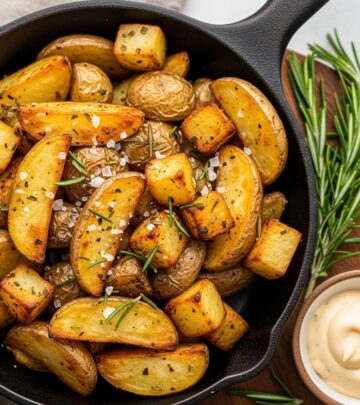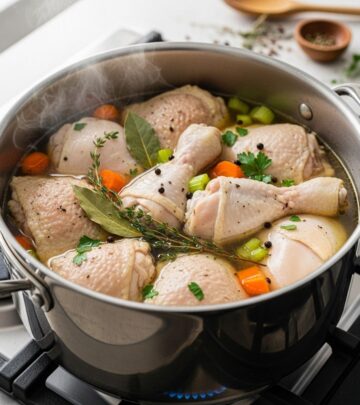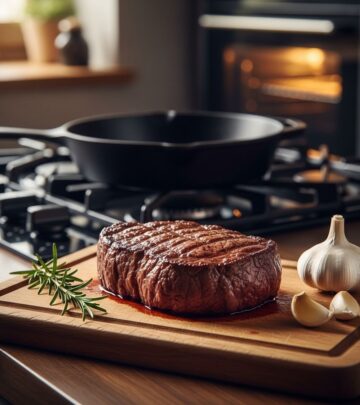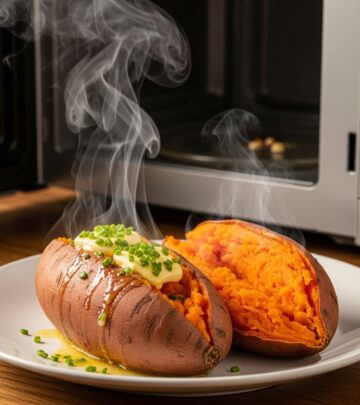Mastering the Art of Roasting Vegetables: Techniques & Tips for Crisp Perfection
Harness heat and technique to transform ordinary produce into rich, savory delights.
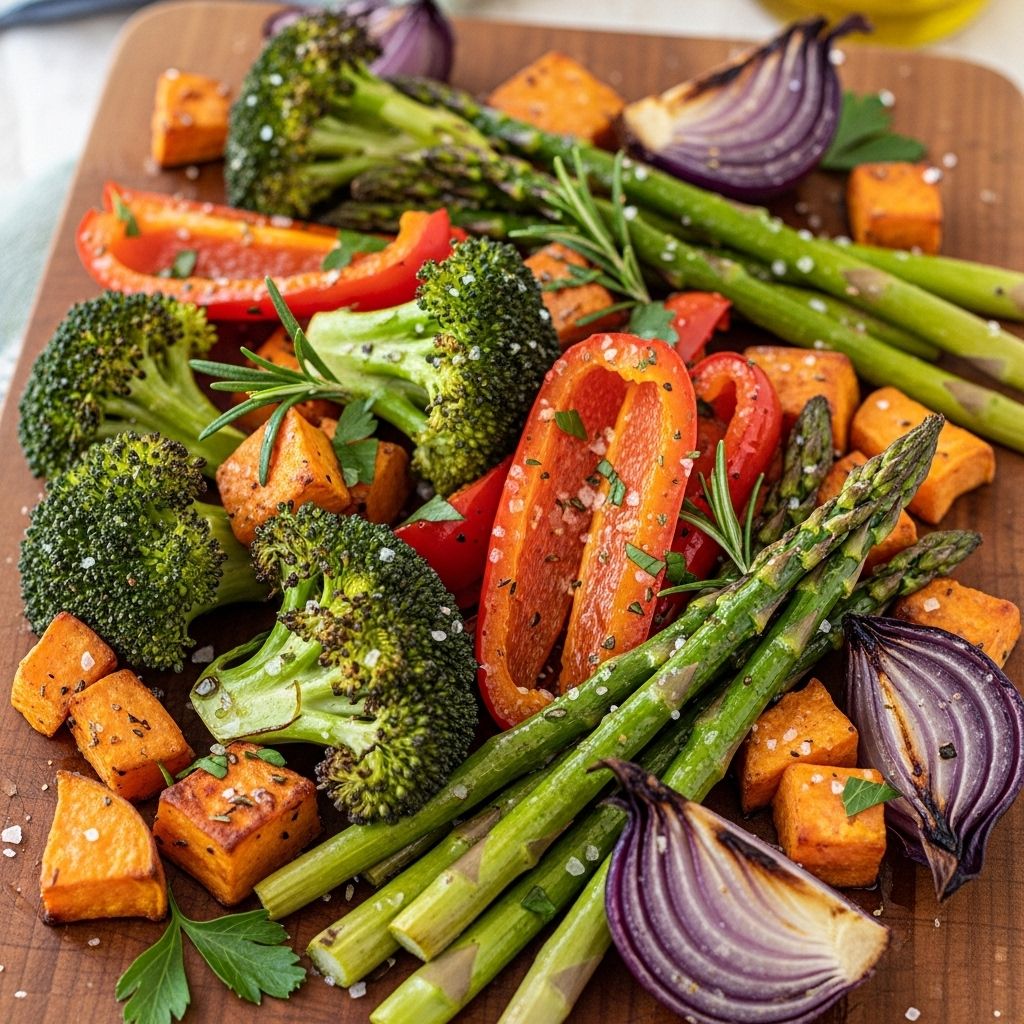
Roasting vegetables is one of the simplest, most rewarding cooking techniques, transforming ordinary produce into irresistible dishes bursting with flavor and texture. However, many home cooks struggle with limp, unevenly browned results. Unlocking the full potential of roasted veggies requires more than just cutting and tossing them on a baking sheet. This comprehensive guide dives deep into the methods, science, and best practices to ensure every batch is golden, crisp, and bursting with savory complexity.
Why Roasting Makes Vegetables Taste Amazing
Roasting at high heat doesn’t just cook vegetables—it unleashes their hidden flavors and delivers a craveable contrast of tender interiors and crisp, caramelized edges. This transformation occurs thanks to two key phenomena:
- Maillard Reaction: A chemical reaction between amino acids and sugars at temperatures above 300°F (150°C), creating new flavor compounds and brown coloration.
- Caramelization: The breakdown of natural sugars at high heat, resulting in sweet, nutty notes and deep browning.
These processes explain why roasted vegetables often convert even the staunchest veggie skeptics. Success, though, depends on controlling moisture, maximizing surface contact, and choosing the right techniques for each vegetable type.
1. Choose the Right Vegetables and Cut for Roasting
Your first step is selecting vegetables that thrive in a hot oven. While nearly any vegetable can be roasted, some excel thanks to their structure and natural sugars. Common winners include:
- Root Vegetables (carrots, parsnips, beets, turnips, sweet potatoes)
- Winter Squash (butternut, acorn, delicata)
- Brassicas (Brussels sprouts, broccoli, cauliflower)
- Certain Alliums (onions, shallots, garlic)
- Firm Summer Veggies (zucchini, eggplant, bell peppers)
Cut size matters for even cooking and maximum browning. Aim for:
- Uniform pieces for even doneness
- Large enough cuts (about ¾–1 inch) to allow a contrast between crispy edges and soft centers
- Flat surfaces for maximum pan contact and browning (e.g., halved Brussels sprouts or carrots sliced at a diagonal)
Table: Suggested Cuts for Popular Vegetables
| Vegetable | Recommended Cut |
|---|---|
| Carrots | Diagonal slices or batons, ¾-inch thick |
| Broccoli/Cauliflower | Florets, cut with a flat side for browning |
| Brussels Sprouts | Halved through the root |
| Potatoes | Wedges or cubes, 1-inch |
| Sweet Potato | Rounds or cubes, 1-inch thick |
2. Maximize Browning: Dry Your Veggies Thoroughly
Moisture is the enemy of browning. Wet vegetables steam in the oven rather than crisp and caramelize. To ensure the most flavorful, golden results:
- Dry freshly washed vegetables thoroughly with a clean towel before seasoning.
- If time allows, let cut vegetables sit uncovered in the fridge overnight. This step wicks away extra surface moisture, further improving browning and crispiness.
- For extra-watery vegetables (like zucchini or eggplant), consider salting and letting them drain for 15–30 minutes, then blotting dry before roasting.
This step might seem minor, but it makes a remarkable difference in the final texture and flavor. Vegetables that have been dried (particularly those left exposed in the refrigerator) develop the most intense browning and crispy exteriors.
3. Don’t Skimp on Oil—But Toss Evenly
Oiling your vegetables is crucial for beautiful roasting. Oil serves several important roles:
- Conducts heat from the pan to the vegetables, boosting browning
- Prevents vegetables from drying out and sticking to the pan
- Helps seasonings cling and flavors penetrate
How Much Oil to Use?
- Aim for 1–2 tablespoons of oil per baking sheet of vegetables (about 1–2 pounds).
- Use your hands or a spatula to toss thoroughly—every piece should be lightly but evenly coated without excess pooling on the tray.
- Choose high-heat oils with neutral flavor (like grapeseed, avocado, or canola) for highest roasting temperatures. Olive oil is classic for flavor, but watch for its smoke point (typically safe for up to 425°F/220°C).
4. Give Ingredients Space—Don’t Crowd the Pan
For the most even browning and texture, avoid overcrowding your pan. Vegetables crowded on a baking sheet release steam and cook unevenly, creating soggy, less flavorful results. Instead:
- Arrange vegetables in a single, even layer, with some space between each piece.
- Use two baking sheets if needed for large batches, rather than piling everything onto one.
- For best results, place cut sides down (especially for halved Brussels sprouts, potatoes, etc.) to maximize direct metal contact and caramelization.
5. Roast Hot and Finish Smart: Temperature and Timing
High, consistent oven heat is pivotal for ideal roasted vegetables. Here’s how to get it right:
- Roast at 425°F to 450°F (220–230°C) for most vegetables. This range encourages deep browning without burning or overcooking the interior.
- Use the middle or lower oven rack for optimal heat exposure.
- Start checking for doneness and browning after 15–20 minutes—total roasting time varies by vegetable and cut size (usually 20–45 minutes). Flip or stir halfway through for even crisping.
- For extra browning, turn on the oven’s broiler for the last 2–4 minutes, watching closely to prevent burning.
When finished, vegetables should be fork-tender inside with pronounced browning or even some char on the edges. Adjust timing and placement as needed for your specific oven model and vegetable mix.
Flavor Enhancers: Season, Dress, and Finish Well
The basic formula for stunning roasted vegetables needs only salt, pepper, and oil. From there, add layers of flavor with thoughtful seasoning and finishing touches:
- Salt and pepper: Generously season before roasting for depth and balance.
- Acid: A squeeze of lemon, splash of vinegar, or pickled garnish after roasting heightens brightness and flavor contrast.
- Herbs and Spices: Sprinkle sturdy herbs (thyme, rosemary) before roasting; delicate herbs (parsley, cilantro, dill) after.
- Optional extras: Fresh grated parmesan, toasted nuts, seeds, or a drizzle of flavored oil or tahini post-roast enhance variety and texture.
Common Pitfalls (And How to Avoid Them)
- Limp or soggy vegetables: Usually due to excess moisture, crowding, or lower oven temperatures. Dry thoroughly and spread vegetables out.
- Burnt edges but raw centers: Cut pieces evenly and adjust oven rack position for more even heating.
- Lack of browning: Increase oven temperature, use less crowded pans, or allow more drying time before roasting.
- Uneven seasoning: Toss vegetables well with oil and spices before spreading on the tray.
Roasting Times for Popular Vegetables (Approximate)
| Vegetable | Cut Size | Temperature (°F) | Time (min) |
|---|---|---|---|
| Carrots | 1-inch chunks | 425 | 25–35 |
| Potatoes | 1-inch cubes | 450 | 30–40 |
| Brussels Sprouts | Halved | 425 | 20–30 |
| Broccoli/Cauliflower | Florets | 450 | 15–25 |
| Sweet Potatoes | 1-inch cubes | 425 | 25–35 |
| Zucchini | Rounds, ½-inch | 425 | 15–20 |
Expert Tips for Next-Level Roasted Vegetables
- Leave cut vegetables uncovered in the fridge overnight for even better browning and less moisture during roasting.
- Try parboiling tougher vegetables (like carrots or potatoes) briefly before roasting for extra creamy interiors and crispy exteriors.
- Experiment with pan types: Heavy-duty rimmed baking sheets (unlined or foil-lined) often yield superior browning compared to glass or ceramic dishes.
- Combine vegetables with similar cooking times. If mixing varieties, add quicker-cooking items later or cut them into larger pieces.
- Flip or stir vegetables halfway through roasting for uniform caramelization on all sides.
Frequently Asked Questions (FAQs)
Q: What temperature is ideal for roasting vegetables?
A: Most vegetables roast best at 425–450°F (220–230°C), which ensures deep browning and a crisp exterior without burning.
Q: Why should I dry vegetables before roasting?
A: Removing as much surface moisture as possible encourages caramelization and prevents steaming, making roasted veggies crisper and more flavorful.
Q: Which oil is best for roasting?
A: Use high-smoke-point oils like avocado or grapeseed for the highest temperatures. Olive oil adds classic flavor and works well up to 425°F.
Q: Can I roast frozen vegetables?
A: Yes, but for best results, don’t thaw them—roast directly from frozen in a hot oven and expect some extra moisture. Increase heat and don’t crowd the pan.
Q: How do I keep roasted vegetables from sticking to the pan?
A: Properly oil vegetables and use a heavy-duty, clean baking sheet. Parchment can help minimize sticking, but direct contact with metal browns best.
Conclusion: Transform Weeknight Meals with Perfect Roasted Vegetables
By paying close attention to prep, drying, oiling, spacing, and temperature, anyone can achieve restaurant-worthy roasted vegetables bursting with flavor, texture, and nutritional value. Experiment with different cuts, seasonings, and vegetable combinations to discover personal favorites. With these science-driven tips and smart practices, every batch will showcase just how delicious and crave-worthy roasted veggies can be.
Read full bio of medha deb







